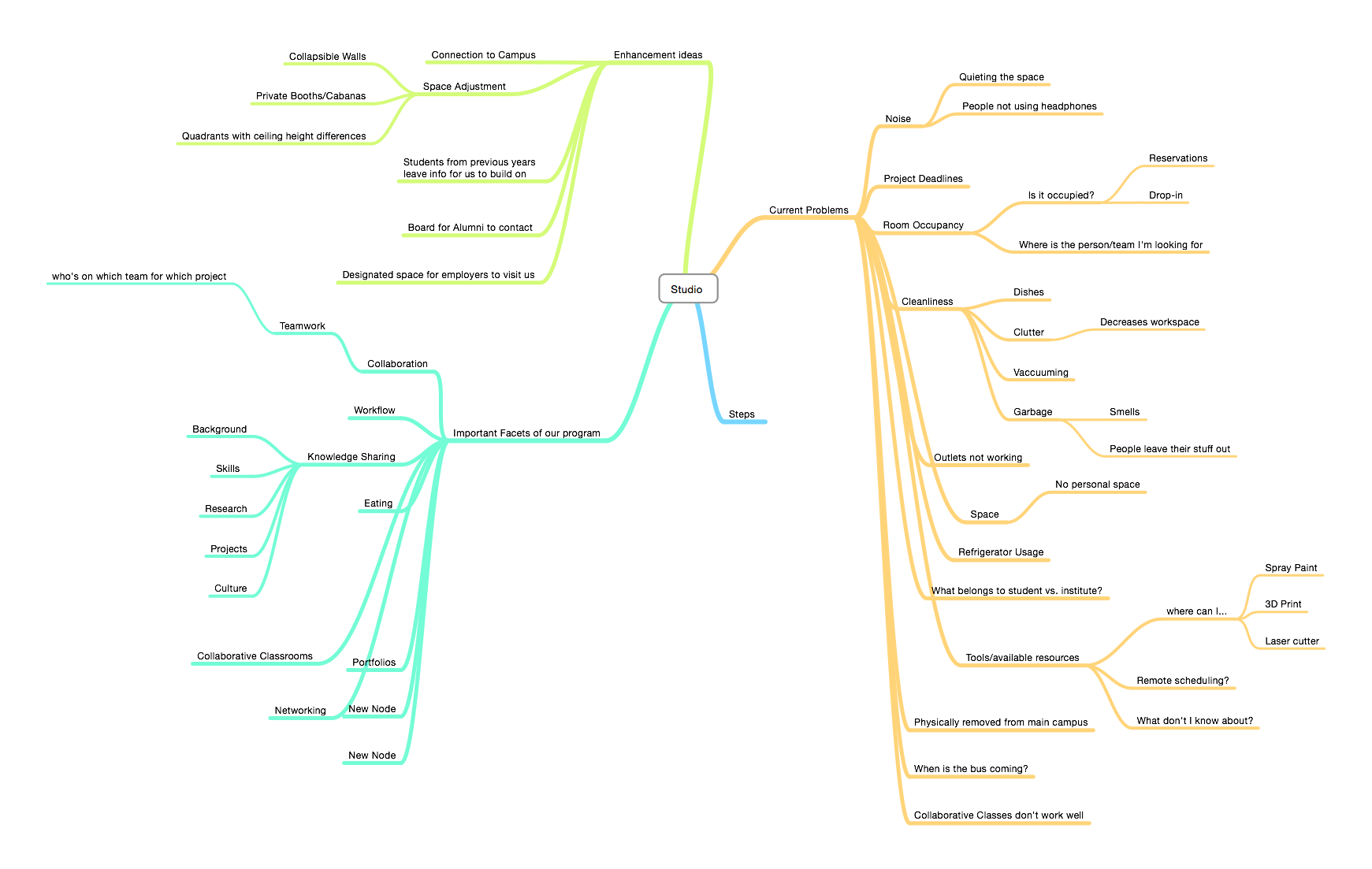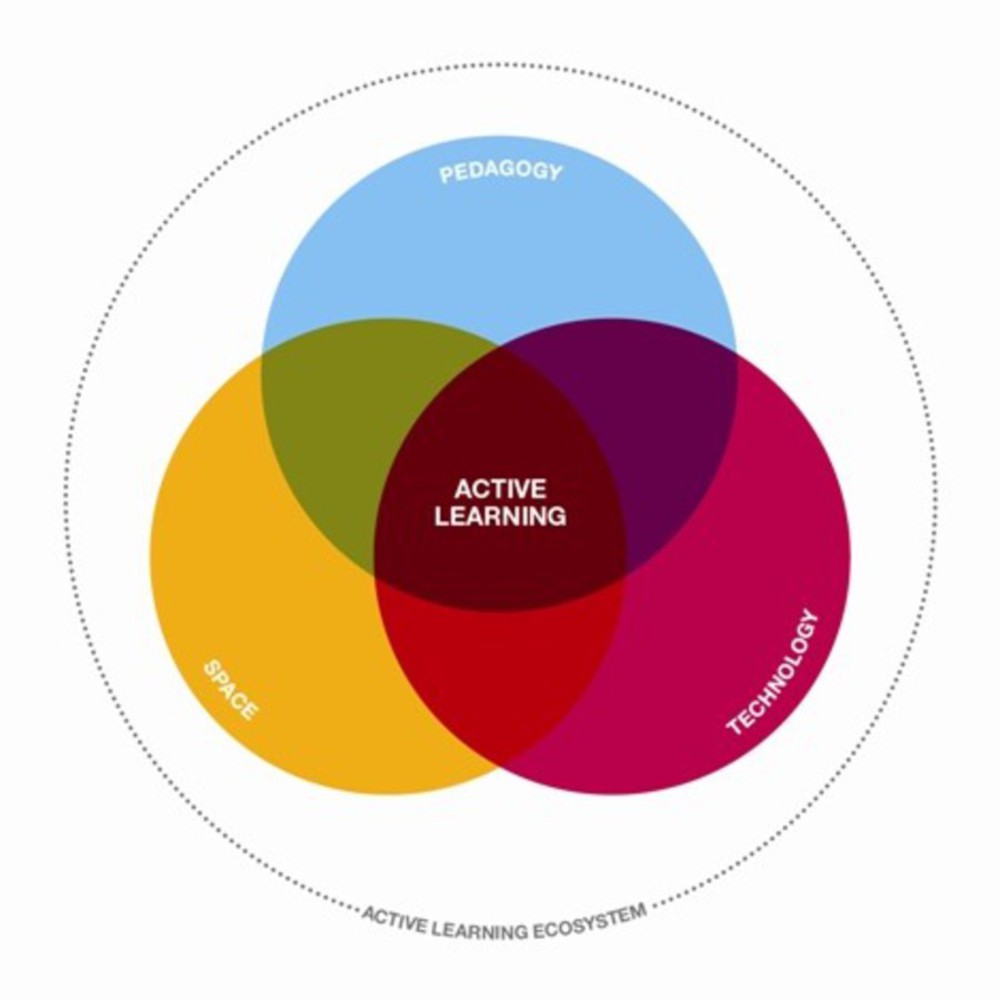The team was very excited to spend two weeks designing for the classroom of the future. Everyone had their own experiences with the studio space at 311 Craig, and many had past experiences learning in a studio setting either in undergraduate school or at a previous work setting. Our initial brainstorming session revolved around current problems in 311 and problems experienced in studio spaces in the past, what makes the Integrated Innovation degree unique, and ideas to enhance the current situation. The fishbone diagram of our initial brainstorm is shown below:
Outcome
What we came up with is an IoT ecosystem which utilizes ambient objects, enchanted objects, and connected objects to enhance the learning process across any field or discipline. This system doesn't only take place in the studio space, but improves the capacity for learning starting in the classroom, across campus, in the studio, and even when the student is at home. Our final vision is to apply the internet of things to learning spaces as a means of minimizing outside distractions, encouraging collaboration, and giving distance education students a more connected experience.
Three distinct prototypes were designed and produced to accomplish our vision:
one // collaborative // colabCase: an object/system that clearly communicates a student's skills, background, and his/her availability to help. This initiates a culture of sharing knowledge and swapping skills, taking the idea of "interdisciplinary learning" to a new level.
two // flexible // MYspot: a system which monitors noise level and number of people in a space in live time to give the student the freedom to make a more informed decision on when and where they want to work.
three // connected // Hearts + Hands: a wearable device which communicates to the teacher overall classroom interest, which students have questions, and leverages different skills and learning styles from or across a distance.
The prototypes for 1,2, and 3 can be seen at
http://ideate.xsead.cmu.edu/gallery/projects/571, http://ideate.xsead.cmu.edu/gallery/projects/574, and http://ideate.xsead.cmu.edu/gallery/projects/573, respectively.
Dr Lennie Scott-Webber, PhD, IIDA, NCIDQ and Director of Education Environments at Steelcase Education Solutions, has this to say about the future of learning:
The top circle is pedagogy, or teaching methods. The circle on the bottom right is technology and the one just opposite is space. In the center is active learning leading to student success. OK. Sounds good. It is – in theory. But it takes a lot of work to realize the dream. If that dream is student success, then behavioral changes are required along with spatial changes for the learning environment. Currently, most campuses and districts have specialists in each of the areas, but rarely have decision-making teams that look at the intersection of these areas and work to realize the benefit of holistic thinking. This disconnect leaves many institutions in dysfunctional disarray and an inability to realize a new future.
You can upload files of up to 20MB using this form.

